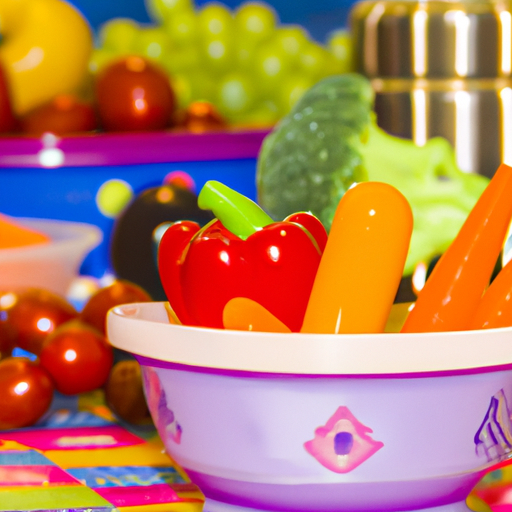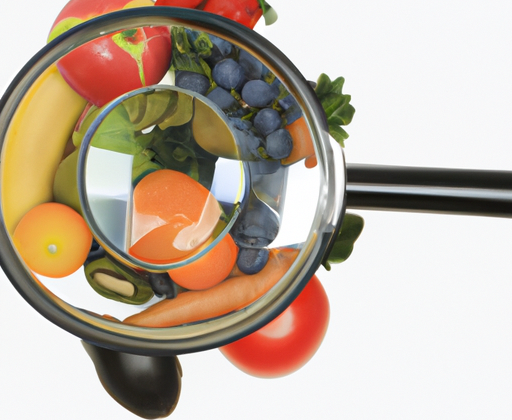Hold onto Your Hats: Food Storage Just Got Serious
Hey there, friends! Today, we’re talking about something that’s near and dear to my heart: food storage when dealing with allergies. Let me tell you, it’s not always an easy task. As someone who struggles with allergies myself, I know just how important it is to keep the allergens at bay, and that starts with proper food storage and preparation.
Best Practices for Storing Allergy-Friendly Food
As someone with food allergies, I know firsthand the importance of keeping my food separate and safe from allergens. Here are some of the best practices that I’ve found helpful in keeping my allergy-friendly food safe and uncontaminated.
Segregating Foods
The first step in storing allergy-friendly food is to segregate it from food that contains the allergen. This may mean designating certain shelves or areas of the pantry and refrigerator for allergy-friendly food. Use separate containers for storing food and designate specific utensils for each type of food. This will help prevent cross-contamination and ensure that your food remains safe to eat.
Labeling Containers and Shelves
It’s important to always label containers and shelves to distinguish allergy-friendly food from non-allergy friendly food. Use clear and specific labels that will help everyone in the household identify which foods are safe and which ones are off-limits. This will prevent any confusion and help prevent accidental consumption of allergens.
Keeping a Running List of Allergens in the Home
It’s also a good idea to keep a running list of all allergens that are present in the household. Update the list as new allergens are added or removed from the home, and keep it in an accessible location where everyone can see it. This will help you stay organized and ensure that you always know what foods are safe and which ones aren’t.

By following these best practices for storing allergy-friendly food, you can ensure that you are keeping your food safe and uncontaminated. Remember to always consult a doctor if you have any questions or concerns about your allergies or food storage practices.
Introducing My Tips for Preparing Allergy-Friendly Meals
Hey there, fellow allergy sufferers! As someone who’s dealt with food allergies for years, I’ve got some tips to help you prepare meals that won’t trigger any reactions. Here’s what I’ve learned:
Choose Allergy-Free Ingredients
When shopping for ingredients, always read labels carefully. Look for any potential allergens and avoid them at all costs. Stick with plain, whole ingredients and avoid pre-packaged meals if possible. Also, don’t forget to check the expiration dates and discard any expired ingredients to keep your food fresh and safe to eat.
Wash Hands and Surfaces Thoroughly
Before starting any meal preparation, wash your hands for at least 20 seconds with soap and warm water. Also, make sure to clean your kitchen surfaces (counters, cutting boards, etc.) regularly to avoid cross-contamination. Keep separate cutting boards and utensils for different types of food to avoid allergen exposure.
Read Labels Carefully
Even if you’ve purchased an item many times before, always double-check the label for any changes in ingredients. Don’t assume that a product is safe because it used to be. Plus, some manufacturers might change their products’ formulations without informing buyers. So, always read the label and check if it contains any potential allergens.
Consult Doctor for Expert Advice
It’s always a good idea to consult with your doctor before making any significant changes to your diet. They will provide expert advice on proper nutrition and safe substitutions for allergens that you need to avoid.
I hope these tips help you prepare delicious and safe allergy-friendly meals. Don’t let food allergies hold you back from enjoying what you love to eat. Happy cooking!
Wrap Up Your Allergy-Friendly Food
Well, that’s a wrap! I hope these food storage and preparation tips helped you feel more confident in keeping yourself or loved ones safe in your home. Remember that everyone’s allergies are unique, and it’s crucial to consult with a healthcare provider for personalized advice. But, for a general consensus, try storing allergy-friendly foods separately and labeling everything clearly. My personal recommendation is to keep a running list of allergens in the home so you can cross-check the ingredients with ease.
Another key takeaway is to read labels carefully when shopping and preparing foods. Just because a product is marked “gluten-free” or “nut-free” doesn’t always mean it’s entirely safe. You may still need to double-check the ingredients and research the brand’s manufacturing processes. It takes a bit of extra effort, but it’s worth it to keep yourself or loved ones from suffering an allergic reaction.
Before you hit the kitchen, remember to wash your hands and surfaces thoroughly. This step can sometimes get overlooked, but it’s easy to cross-contaminate allergens if you’re not careful. It’s also crucial to choose allergy-free ingredients and ensure that everything is prepared far away from any potential allergens.
Overall, there’s no foolproof way to avoid allergies entirely, but by following these tips, you can minimize the risk and feel confident in your food storage and preparation techniques. If you’re seeking further advice, I recommend checking out Baked Occasions for more expert tips and tricks. Keep peanuts and gluten and anything else you or your loved ones need to avoid out of sight, and you’ll be well on your way to a safe and happy snacking life.

